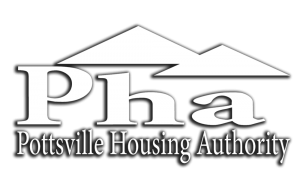WASHINGTON – U.S. Housing and Urban Development (HUD) Secretary Julián Castro today announced that public housing developments in the U.S. will now be required to provide a smoke-free environment for their residents. In an address to local public housing officials, residents and public health professionals in Boston, Secretary Castro said HUD’s new rule will provide resources and support to more than 3,100 Public Housing Agencies (PHAs) to implement required smoke-free policies over the next 18 months. Read HUD’s final rule.
Throughout this year, HUD worked with PHAs and stakeholders collaboratively to finalize this rule, which prohibits lit tobacco products (cigarettes, cigars or pipes) in all living units, indoor common areas, administrative offices and all outdoor areas within 25 feet of housing and administrative office buildings. HUD’s final rule included input from more than 1,000 comments from PHAs, housing and health partners, and tenant advocates.
“Every child deserves to grow up in a safe, healthy home free from harmful second-hand cigarette smoke,” said Secretary Castro. “HUD’s smoke-free rule is a reflection of our commitment to using housing as a platform to create healthy communities. By working collaboratively with public housing agencies, HUD’s rule will create healthier homes for all of our families and prevent devastating and costly smoking-related fires.”
Since 2009, HUD has strongly encouraged PHAs to adopt smoke-free policies in their buildings and common areas, a policy many private housing developments already have in place. During this time, more than 600 PHAs and Tribally Designated Housing Entities (TDHEs) have adopted smoke-free policies.Through HUD’s voluntary policy and local initiatives, more than 228,000 public housing units are already smoke-free. Once fully implemented, the smoke-free rule announced today would expand the impact to more than 940,000 public housing units, including more than 500,000 units inhabited by elderly residents and 760,000 children living in public housing.
“My office has long warned the public about the dangers of smoking, including second-hand smoke,” said U.S. Surgeon General Vivek H. Murthy. “For children who are exposed to second-hand smoke, it can mean everything from Sudden Infant Death Syndrome and ear infections to asthma. Protecting our children and families from the devastation caused by secondhand smoke must be a priority for all sectors of our society, including public housing.”
HUD’s smoke-free rule will reduce damage and maintenance costs associated with smoking. According to the Centers for Disease Control and Prevention (CDC), HUD’s national smoke-free policy will save public housing agencies $153 million every year in repairs and preventable fires, including $94 million in secondhand smoke-related health care, $43 million in renovation of smoking-permitted units, and $16 million in smoking-related fire losses.It is estimated that smoking causes more than 100,000 fires each year nationwide, resulting in more than 500 deaths and nearly a half a billion dollars in direct property damage.
“Protecting people from secondhand smoke saves lives and saves money,” said CDC Director, Tom Frieden, M.D., M.P.H. “This is especially important in the places where we live. No level of secondhand smoke exposure is safe, and the home is the primary source of secondhand smoke for children.”
The CDC estimates cigarette smoking kills 480,000 Americans each year, making it the leading preventable cause of death in the United States. In addition, smoking is the lead cause of fire-related deaths in multifamily buildings. HUD’s smoke-free rule will protect the health of public housing residents by reducing the health risks associated with tobacco use and exposure to secondhand smoke.
PHAs are encouraged to take advantage of the information and resources on HUD’s Healthy Homes website. Updated guidance and training materials will be available in the coming months.
For more information please refer to the U.S. Department of Housing and Urban Development website.
